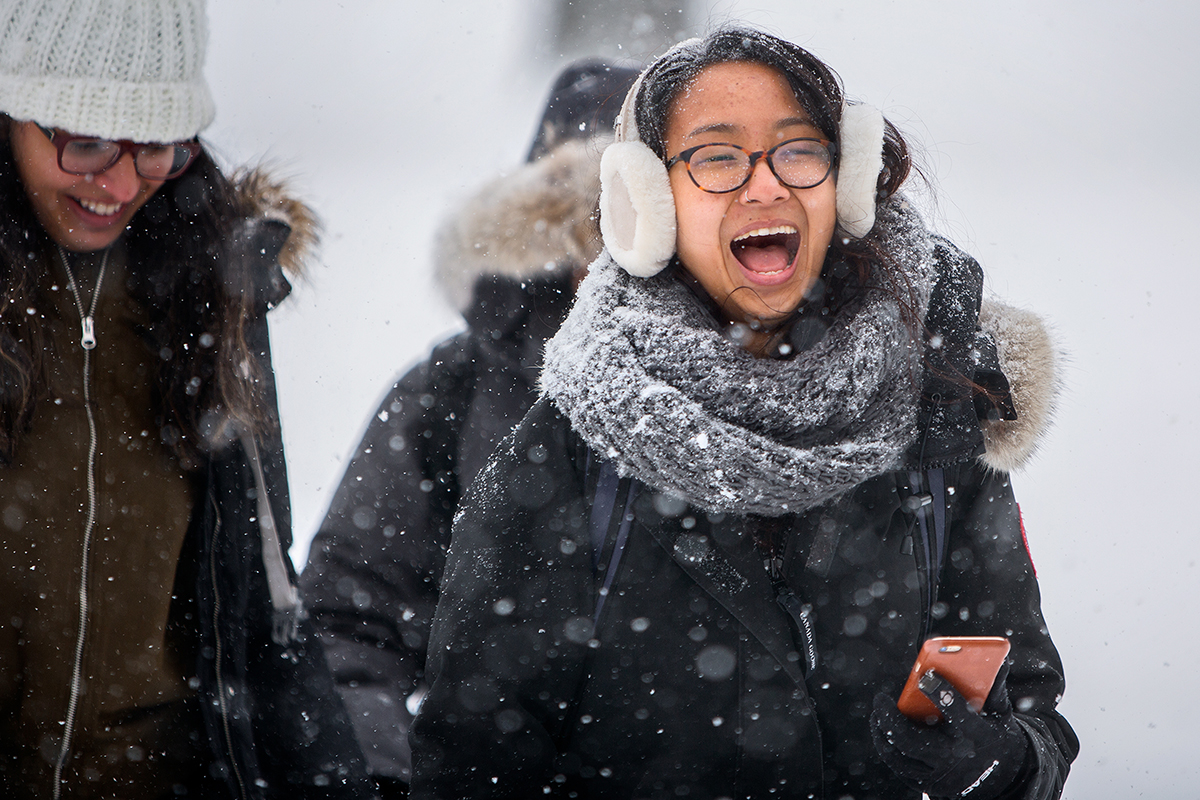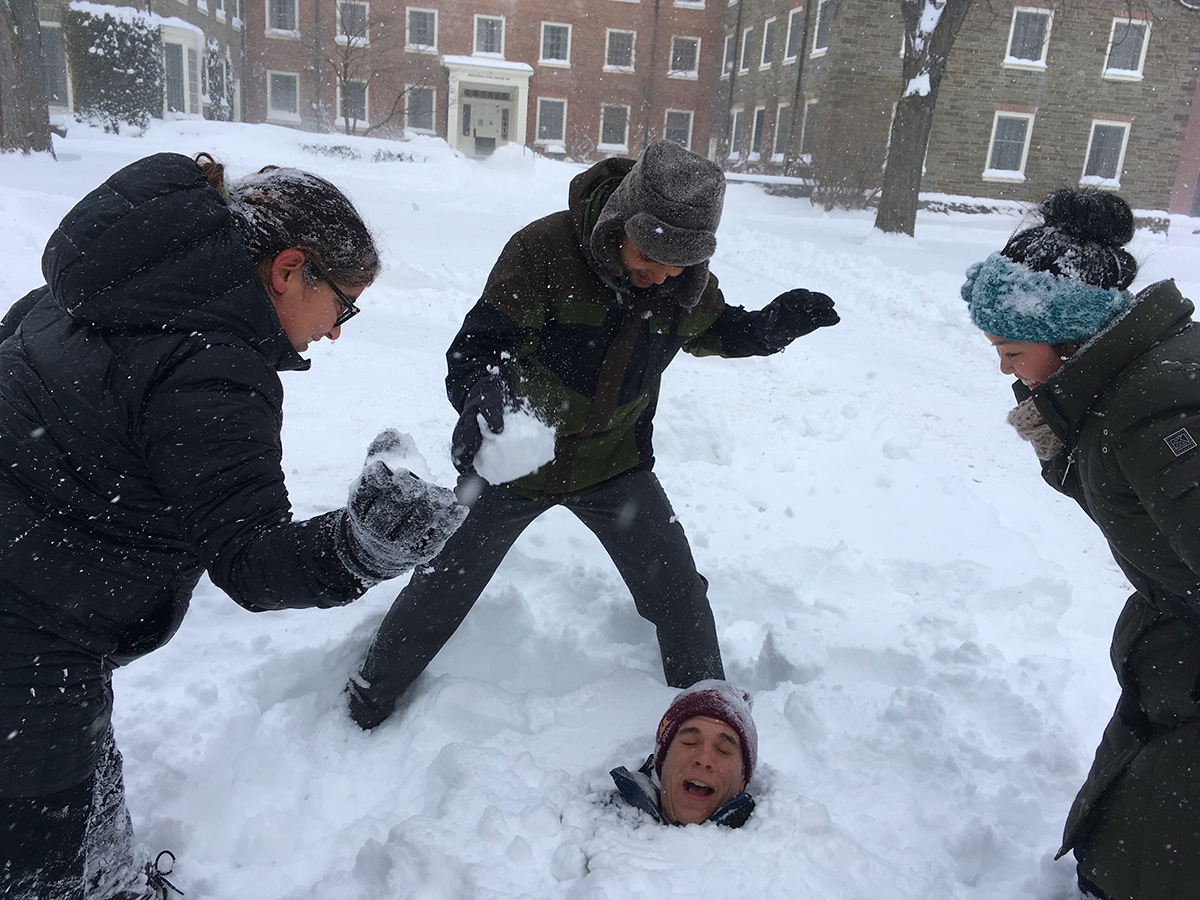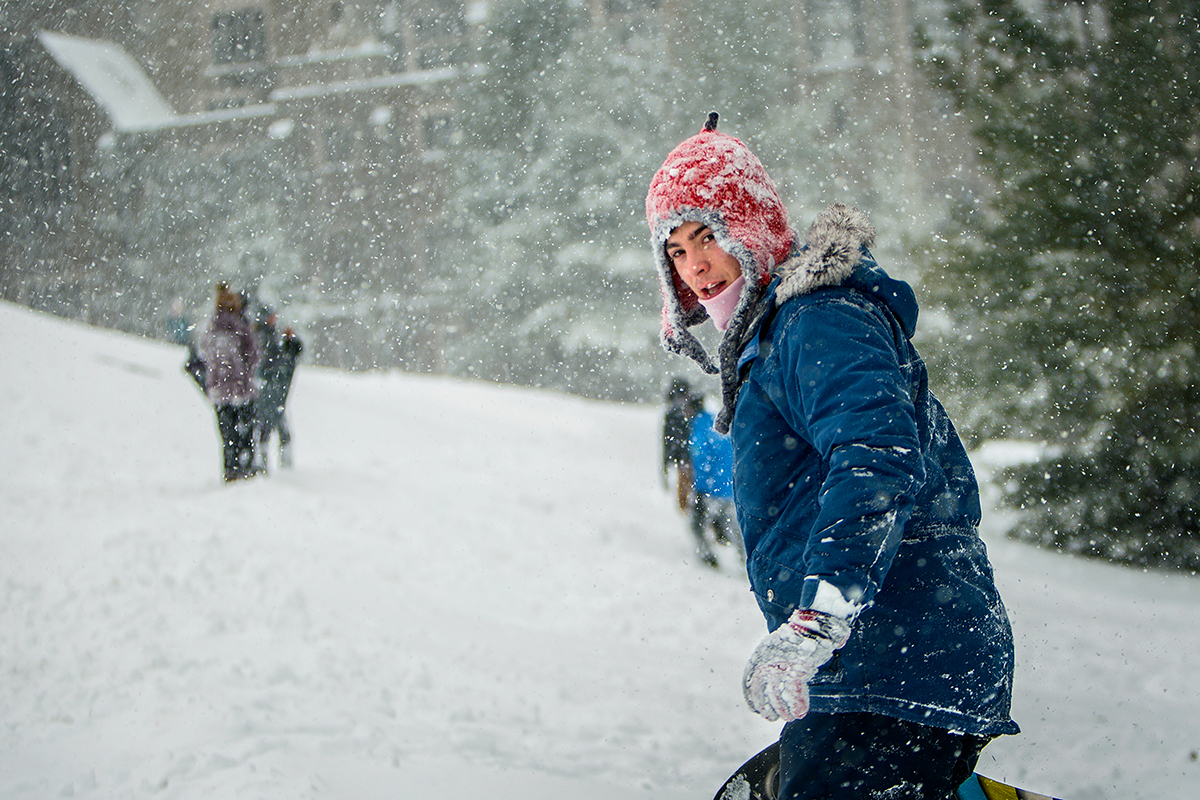Cornell buttons up, battens down during winter storm
By Blaine Friedlander

A nor’easter, combined with a winter storm from the Great Lakes, bore down on the Northeast Tuesday morning, as meteorology students in Toby Ault’s tropical weather class fidgeted with anticipation.
“The students were a bit distracted from my lecture on El Niño and the distant realms of the tropics, with a blizzard looming on our department’s weather radar screen,” said Ault, assistant professor of earth and atmospheric sciences.
“We all received the CornellALERT on our mobile phones at the same time, so it was pretty clear that we weren’t going to make much progress. Out of concern for their safety – some of them had to drive – I let out class early,” said Ault. “I guess extreme weather during climate change can be a distraction from learning about extreme weather during climate change.”

For the first time since February 2014, Cornell closed the Ithaca campus due to snow, halting all but essential services from noon March 14 until 4:30 p.m. March 15.
About four dozen employees from the facilities, grounds and building care departments battled the tempest – which left about 15 inches of snow on the ground – from Monday through Wednesday. Cornell dispatched a dozen plow trucks and 10 sidewalk tractors to clear more than 61 miles of sidewalks, 15 miles of roadway and 114 acres of campus lots, according to Ben Kuo, associate vice president for facilities management, of Infrastructure, Properties and Planning, and Dan Schied, director for grounds.
“The snow and the wind were unrelenting. These were some of the most challenging conditions we’ve ever seen,” said Kuo.
Although officially closed, the work of Cornell continued. Greenhouse grower Julie Blaha braved the roads from her home in Odessa, New York, to tend plants in the Kenneth Post Laboratories and Greenhouses, while grower Laurence Walsh patched several broken windowpanes when melted snow and ice fell through the roof.

Walsh, born and raised in Hawaii, moved to Ithaca six months ago. “I have discovered that I love the cold,” he said. “It’s so refreshing.”
United Parcel Service suspended Ithaca operations due to the snow, but Andy Leed, the Kenneth Post Labs facility manager, picked up his weekly shipment of beneficial insects – cucumeris mites that control greenhouse thrips and persimilis that control spider mites. “UPS unloaded their 18-wheeler truck to sort through it to find my box,” said Leed. “These are biocontrols; they’re tropical insects. If they freeze, they’re gone.”
Hundreds of students played on Libe Slope and commemorated the snow day with smartphone camera selfies. Others took advantage of the campus closure to study for prelims. Students at the Robert Purcell Community Center curled up on the comfy sofas and chairs, headphones affixed, reading intently or poring over equations.
Waves of students stripped food shelves at the Bare Necessities convenience store, as cashier lines wound through the aisles. Students dining at the Robert Purcell Marketplace Eatery took more time to relax, as they did not need to rush off after meals.

Keith Eggleston, meteorologist at Cornell’s Northeast Regional Climate Center, noted that Ithaca officially received 15.4 inches of snow over the three-day storm period. The storm broke no records, he said. The record snowfall in March for a 24-hour period was set March 30, 1984, when 16.5 inches fell.
South of Ithaca, Binghamton took the brunt of the nor’easter, with 31.3 inches of snow falling on March 14 – beating the old record of 23 inches set in February 1961. Binghamton also set a new seasonal record for snowfall at 131.7 inches.
Ashley Merzon ’17, president of the Cornell Chapter of the American Meteorological Society, and Marc Alessi ’18, the club’s secretary, saw several storm forecasting models and predicted Cornell would close. The models showed strong low pressure from the Great Lakes converging with a system riding up from North Carolina. Binghamton’s National Weather Service office posted a rare blizzard warning for northeastern Pennsylvania on Monday night, exciting further Cornell’s budding meteorologists.
Alessi and several other meteorology students gathered Monday night in Bradfield Hall to study for Ault’s tropical weather class, but they could not resist watching the winter storm models.
Waiting in the lab well past midnight for next model run, Alessi said, “It was like Christmas Eve for me.”
Media Contact
Get Cornell news delivered right to your inbox.
Subscribe